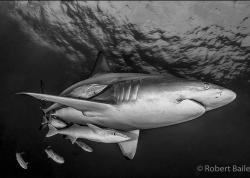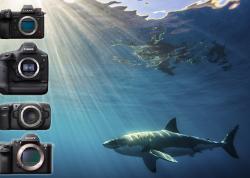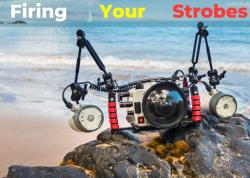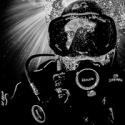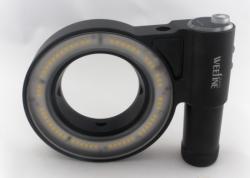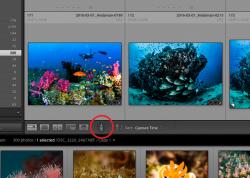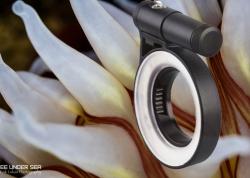Wide-Angle in the Andaman Islands

I had the privilege of joining Bluewater Photo’s Mark Strickland on an amazing 10-day underwater photo workshop to the Andaman Islands, on the beautiful Infiniti Liveaboard. For those who are unfamiliar with the Andaman Islands, they are a territory of India, situated in the Bay of Bengal between India to the west, and Myanmar and Thailand to the east.
The itinerary would be bringing us to several locations over the 10-days, but what I looked forward to the most were the remote and uninhabited, Narcondam and Barren Islands.
In addition to the remote, infrequently visited locations we would be diving, the Andaman Islands are known for their amazing soft and hard coral reefs as well as large schools of fish, both of which make great subjects for wide angle photography. In this article I wanted to share some tips and techniques for capturing engaging wide angle photos.
Get Close, then Get Closer ... and finally, Get Even Closer
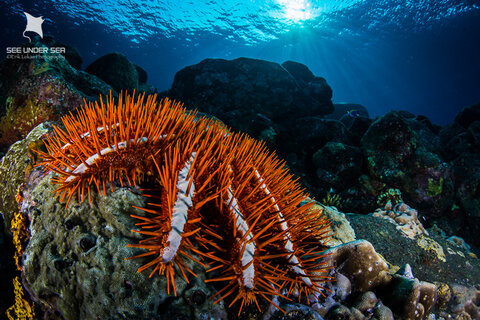
One of the most dramatic techniques in wide-angle photography is Close Focus Wide Angle. This technique leverages the extreme close focus capability and tremendous depth-of-field attributes of a super wide-angle lens. It allows the photographer to place a subject very close to the lens, while still capturing a wide angle of view of the background scene. In this example, I used the Canon 8-15mm f/4L fisheye lens behind a Zen DP-100 (4 inch mini dome), and framed a Crown-of-Thorns starfish just a few centimeters from the dome port. The small size of this dome allowed me to position the subject as close to the minimum focusing distance of the lens as I could, while still providing a wide angle of view for the rest of the scene. An exposure of 1/200th at f/16 and ISO 160 allowed me to sharply capture both the closest thorns and the furthest rocks, plus the rays of sun, and the rich blue of the water. The Sea&Sea YS-D1 strobes were fired at full power and were positioned slightly behind the camera housing. They were pulled in very close to the handles, and aimed away from the subject to prevent backscatter. The use of two large diffusers allowed the soft light to wrap around and illuminate the entire subject.
Get Low, Take a Deep Breath, Then Get Set
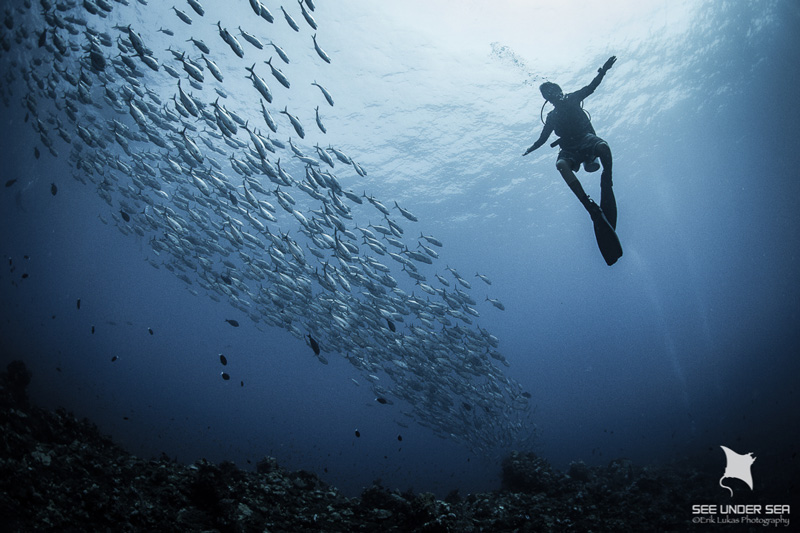
There is no better way to transport your viewer into your photo than to give them a scene they can relate to. Having a diver present in the photo is perhaps the best way to allow the viewer to relate to an image ... they can imagine themselves in the diver's position. I was framing a scene of some colorful soft corals at a dive site called Black Magic when my dive buddy tugged on my fin to alert me to the freight train of Jacks barreling past us behind my back. As I turned to look, I noticed two things: the massive size of this school of fish and one of the dive guides hovering about 8-10 feet above the bottom, and only 4-6 feet away from the school. Knowing this scene would be fleeting, I took a deep breath, cleared my mind and ran through what I would need to do to set up for this shot. I turned both of my strobes off and made two test images to adjust the camera settings for the ambient light. I then made sure the diver was placed in the upper right third of the frame, and had the fish swimming into the frame from the upper left. Without the use of strobes, I was able to capture the deep blue of the water, the diver in silhouette, and was able to use the ambient light to reflect off the silver skin of the fish.
Go Full Circle
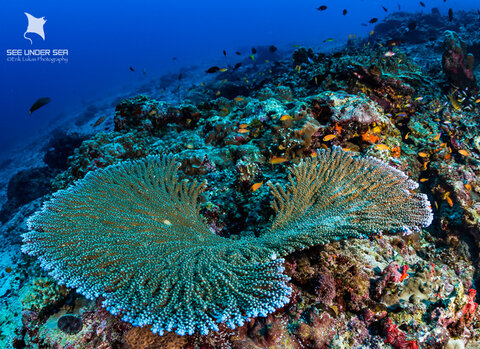
All fisheye lenses are wide-angle, but not all wide-angle lenses are fisheye. The Canon 8-15mm f/4L is a full 180° circular fisheye lens. At the 15mm zoom setting it fills the frame with a complete 180° field of view, but zoomed out to the 8mm setting, it gives a complete circular image that is surrounded by a black frame. It’s certainly not a setting that is conducive to all situations, but used judiciously and in the right conditions, it can create some very engaging images that have the viewer leaning in to get a closer look. I had found a beautiful patch of branching hard corals at a site called Lighthouse Reef at Narcondam Island, but what caught my attention was a single smaller coral head that was separated from the larger colony by about 15-20 feet. I had worked on a few close focus shots of the coral, and after getting an image I was pleased with (first image from above) I thought it would be an ideal scene to try with a full circular fisheye view. As you can see from the results, both images are interesting, but the full circular image really does leave a lot to the imagination...almost appearing to be an image of our own planet, and pulling the viewer in for a closer inspection.
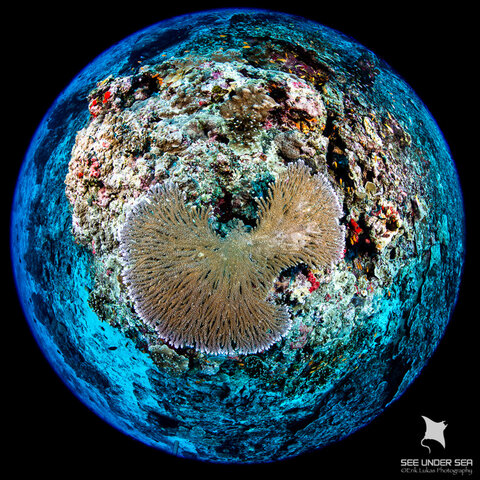
I hope this brief article gives you a few ideas on ways to explore your wide angle photography. There are countless ways to create an image that will engage the viewer, and these are just some that I like to think about while searching for scenes to capture.
Curious about more diving in the Andaman Sea? Check this article from Bluewater Travel about diving in Myanmar.
RECOMMENDED ARTICLES
SUPPORT THE UNDERWATER PHOTOGRAPHY GUIDE:
The Best Service & Prices on u/w Photo Gear
 Visit Bluewater Photo & Video for all your underwater photography and video gear. Click, or call the team at (310) 633-5052 for expert advice!
Visit Bluewater Photo & Video for all your underwater photography and video gear. Click, or call the team at (310) 633-5052 for expert advice!
The Best Pricing, Service & Expert Advice to Book your Dive Trips
 Bluewater Travel is your full-service scuba travel agency. Let our expert advisers plan and book your next dive vacation. Run by divers, for divers.
Bluewater Travel is your full-service scuba travel agency. Let our expert advisers plan and book your next dive vacation. Run by divers, for divers.




